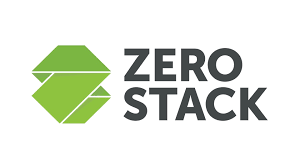A Low-maintenance, Software-driven Private Cloud from ZeroStack

The stampede to the cloud is on. Renting cycles if only for workload bursts is by now commonplace. Statistical and anecdotal evidence validates that at least partial adoption of the cloud has become so widespread that it doesn’t takes great powers of extrapolation to wonder: How long before nearly everything is run in the cloud?
But as it turns out, the sky is not the limit for the cloud. Public clouds pose security concerns. And even if it is true, as some argue, that public cloud service providers have superior security technology and expertise than most on-prem IT, it’s also the case that regulatory compliance dictates that much data and many types of transactions not be conducted off-prem. Then there are cost control issues: use of public cloud resources can quickly balloon. And performance issues: specialized technologies can be missing from the public cloud resource menu.
Meanwhile, the private cloud offers some of the advantages of public clouds, but with myriad operational complexities and extended set-up timeframes.
What if there were a combination of the two clouds: the convenience, instant provisioning and operational ease of the public, with the control, security and performance of the private?
ZeroStack, a Mountain View start-up with roots in virtualized security and and VMware, this week announced its best-of-both-worlds ZeroStack Cloud Platform, which it calls the industry’s first “zero-touch” private cloud that eliminates the complexity of building and managing a private cloud.
“In the private cloud you have complete control but you also have a complete headache,” Ajay Gulati, co-founder and CEO of ZeroStack, told EnterpriseTech. “You have to deal with all these things yourself.
“The complexity inherent in existing solutions delays time-to-value, while introducing high costs for deployment and maintenance. Our automated approach takes users from bare metal to running applications in the cloud in minutes, while eliminating the day-to-day problems for IT administrators.”
The company said the platform enables improvements over existing private clouds, including:
- A distributed, resilient architecture managed by intelligent software that eliminates the need for maintenance by IT administrators
- The ability to launch applications with a single click through an integrated catalog of templates
- Analytics for troubleshooting and capacity planning
Gulati said the key innovation is the product’s two-layer design. Located on-prem, behind the customer firewall, is a hyper-converged, software-defined infrastructure called ZeroStack Cloud Building Blocks, which integrate compute, storage, networking and management software. This layer comes in several versions that weights throughput, memory or all-flash IOPs, depending on use-case need. It is delivered in a 2U chassis with four server nodes and has 64 to 128 CPU cores, 512 GB to 1 TB of RAM and 6.4 TB to 19.2 TB of SSD. It can be scaled out by connecting multiple servers.
This on-premises infrastructure is consumed and managed by the ZeroStack Cloud Portal, which is located in the public cloud and provides analytics for application deployment, capacity resource management and troubleshooting.
Gulati said that while ZeroStack has the capacity to support compute- and memory-intensive advanced scale requirements, it doesn’t offer specialized hardware, such as GPUs or Infiniband.
“There’s a perception of open stack,” said Al Sadowski, research director at industry watcher 451 Research, said in a phone interview, “that it’s difficult for an enterprise that doesn’t have a lot of technical resources skilled in open stack to configure an on-prem or hosted private cloud. What they’re (ZeroStack) trying to do is address the complexity issue by basically providing a solution that works out of the box.
“Enterprises don’t have to figure out which hardware, which networking components, which distribution to implement, ZeroStack pretty much makes those decisions for them,” said Sadowski.
He said another start-up, Platform9, has a somewhat similar approach, noting that ZeroStack software is hosted like an SaaS model. He said that with Platform9, “you deploy your hardware wherever you want it. What they don’t have is the hardware configuration ready to go, and that’s what ZeroStack has.”











